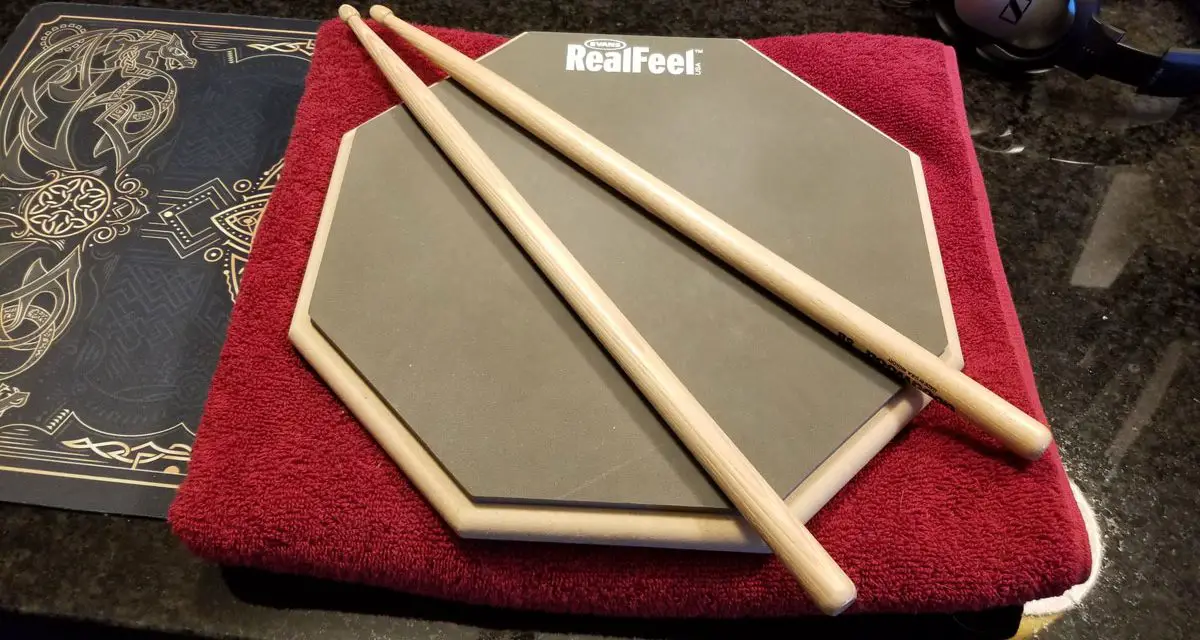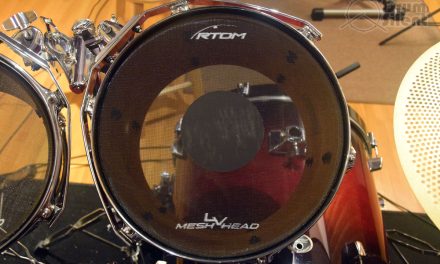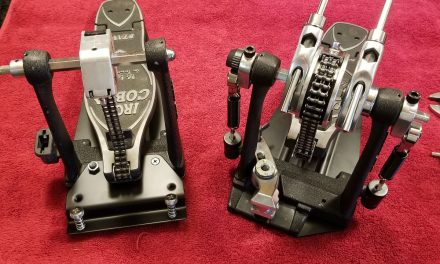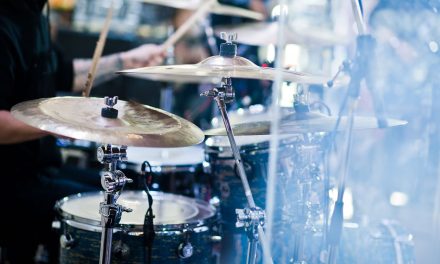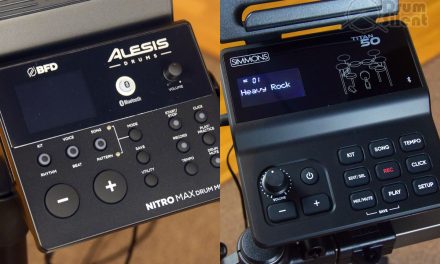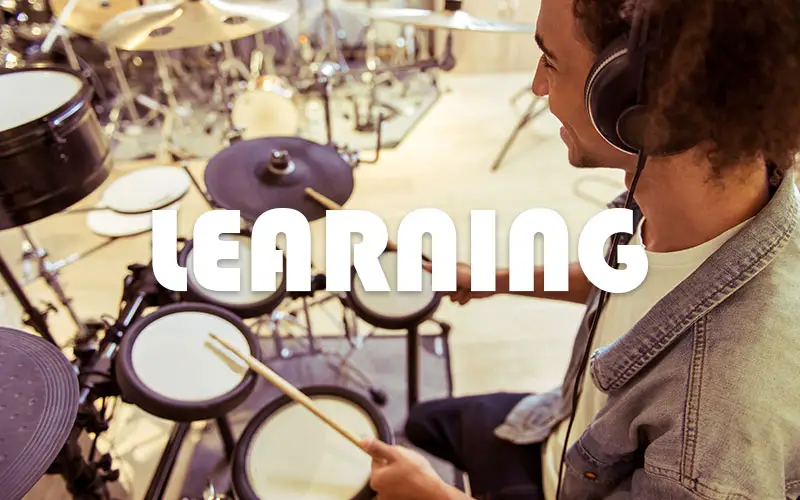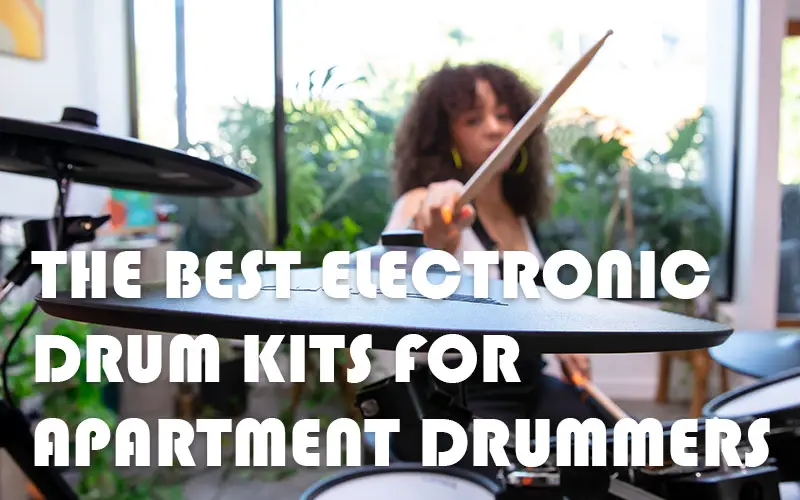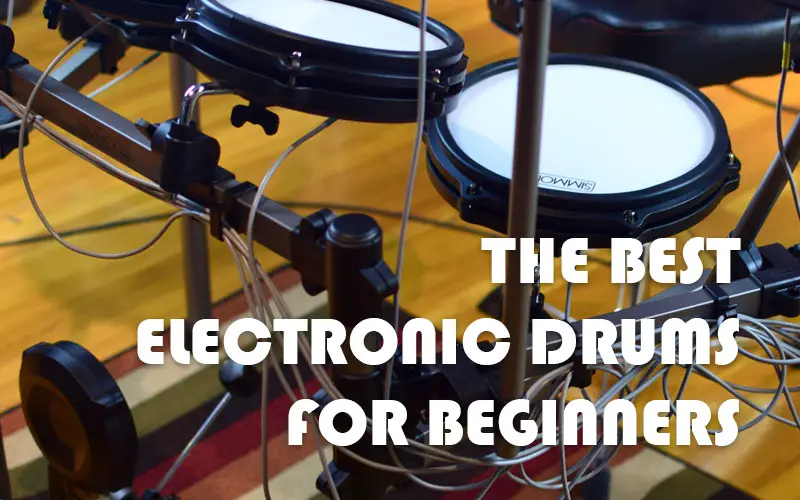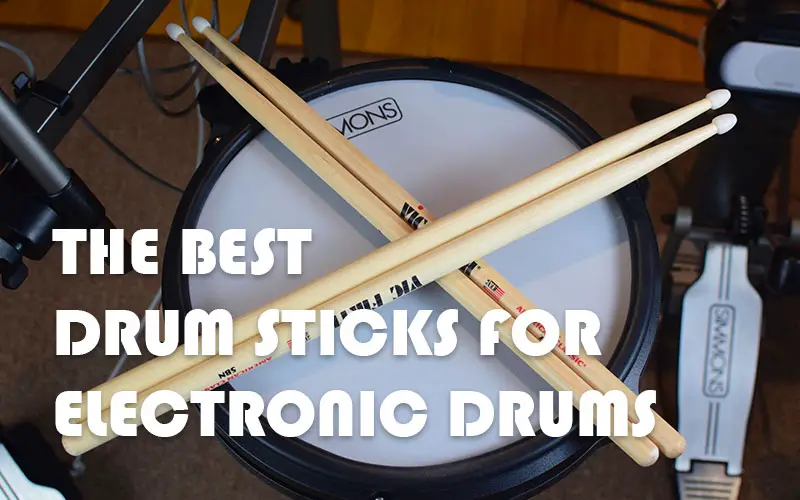Trying to practice drums when you’re in a situation where can’t make much noise can be a little frustrating. Many drummers live in apartments, have roommates or live in situations where they can’t just hammer away on an acoustic drum kit for practice. Luckily there’s some things you can do to try to bring the noise levels down, which will allow you to practice while not bothering other people as much with the noise.
Muting An Acoustic Drum Kit
If you have an acoustic drum kit there are some things that can be done to mute the sound so it’s not as loud. Muting an acoustic kit is a pretty cheap option for drummers that already have acoustic drums and no other options.
Use What You Already Have
The easiest way to mute an acoustic drum kit is to basically go wild with towels, pillowcases or anything else that you can lay over your drums and cymbals to mute the sound.
You can stuff up the kick drum with pillows and use cloth to mute the drum heads. It’s possible to remove the rim of the drum and lay the cloth right on top of the drum head, then reassemble. This hold the cloth in place easily enough and keeps it stretched tight.
This is the extreme budget option as long as you have access to some cloth and don’t mind experimenting with the best way to keep it effectively attached to the drums and cymbals. It’s not a perfect solution, but it can work.
Get Some Drum Mutes
Drum mutes are another option and you can buy drum mute packs from most drum shops or online. A drum mute pack is nice because everything is designed to be easily overly drum heads and attach to cymbals and kick drums. It an easy plug and play option, basically.
A drum mute pack will take the sound of your kit down a few levels, but it will still not be entirely silent. It will also affect the tone of your drums to an extreme degree, and everything will sound deadened and muffled. The negative affect on sound may or not be an issue for some drummers, but if you need to get the practice in and don’t have any other options it can work.
Some drum mutes try to keep from drastically altering the “feel” of your drums, even though they will greatly mute the sound. The Vic Firth drum mutes and the Evans drum mutes are examples of this. They can be worth checking out since they aren’t overly expensive for what they accomplish, which is quick and easy setup and muted drums without loosing a lot of the feel of your kit.
Low Volume Drum Heads
Another option, if you don’t mind swapping out drum heads, is to look into low volume drum heads. These types of drum heads are designed to take the volume down by quite a bit while also providing the feel of a real drum head. These can be great if retaining the feel of your kit is one of your top priorities.
There are plenty of options on the market, but the Evans dB One drum heads and the Remo Silent Stroke drum heads are well rated options if you decide to go this route.
Low Volume Cymbals
If you want to reduce the volume of your cymbals but don’t want to use mutes or pads that will make them sound dead, low volume cymbals are a good option to look at. They feel like regular acoustic cymbals but are punched with lots of holes to reduce the overall volume. Good low volume cymbals are capable of being up to half or more of the volume of a standard cymbal, while still sounding good enough to be enjoyable to play.
We’ve covered our favorite low volume cymbals and have some good recommendations listed there if you aren’t sure where to start. Familiar companies such as Zildjian, Evans and Sabian all make some good quality low volume cymbals.
Using Practice Pads to Practice Quietly At Home
Practice pads are always going to be a good option for practicing drums at home without making a whole lot of noise. Most drummers will have at least one practice pad at home if they practice regularly.
Practice pads in general aren’t overly noisy, but they do create a tapping sound which can be annoying if you have housemates and you practice a lot.
There are some practice pads that are going to be a little more quiet than others if you are trying to keep noise to a minimum. Practice pads such as the Offworld Invader will be a little more noisy due to how they are constructed and they aren’t intended specifically to be used when trying to keep quiet. However, practice pads such as the Evans Realfeel or the Prologix Green Logix pad are a little more quiet and less likely to bother housemates. You can safely use either of those practice pads in most apartment situations without really bothering your neighbors.
My go-to for playing a practice pad in my apartment is using an Evans Realfeel pad which sits on top of folded towel on one of my kitchen countertops. I can practice at any time with that little setup and have never bothered the neighbors.
Practice pads won’t offer much in terms of simulating a drum kit or a trap set. So let’s take a look at electronic drum kits next.
Using Electronic Drum Kits To Practice Quietly At Home
Another great option for practicing drums quietly at home is to use an electronic drum kit. This is kind of similar to the practice pad idea, except you can play a whole drum kit.
Most electronic drum kits are essentially a set of practice pads that are wired up to send signals to a drum module for playback. If you don’t plug them into anything, it sounds like you’re playing practice pads.
Electronic drum kits usually will include a combination of mesh and rubber drum heads. The mesh drum heads are typically going to generate less of a tapping noise than rubber drum pads. So if you want to be able to practice snare rudiments without bothering your housemates as much, for example, a mesh drum pad can work great for something like that.
The more problematic parts of an electronic drum kit in terms of noise are usually the cymbal pads and the kick drum pad. The cymbal pads are always rubber and sound like a rubber practice pad when played. The kick drum pads are on the floor, so any thumping on the kick pad can be transferred into the floor and bother people in the rooms underneath your kit. Just some things to keep in mind if you go this route.
We have another write-up about electronic drumming in an apartment if you’re looking for some more info about that. If you are looking for some drum kit recommendations check out our preferred electronic drum kits for apartment drummers or our electronic drum kit reviews.
What’s My Preferred Method for Practicing Quietly At Home?
At home in my apartment I’m using an Evans Realfeel practice pad and I’m also fully in the electronic drum kit camp at this point. I think it’s more satisfying to play electronic drums than a muted acoustic drum kit. I also think that an electronic drum kit looks better than an acoustic drum kit that is all covered up with mutes and pads.
I think drum mutes are more suitable for a drummer who is trying to keep the sound down while living in a house with other roommates or family, or situations more like that with no immediate neighbors. If you have neighbors in an apartment, a muted acoustic kit might still be too much.
Hopefully this gives you some ideas to keep quiet while you practice! Remember to use a metronome!

